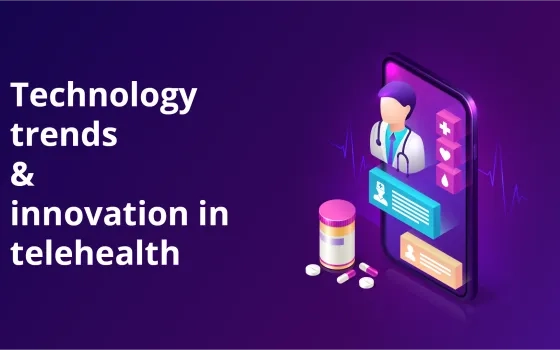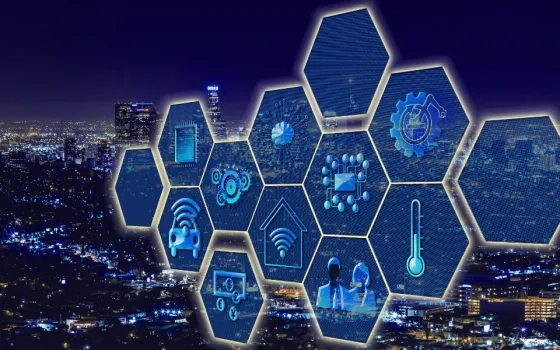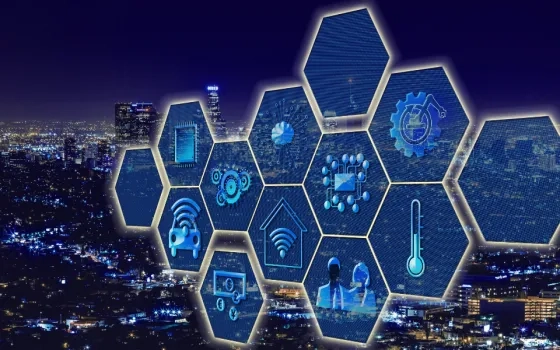Telehealth – Innovations & Technology Trends
In the current COVID era, telehealth suddenly seems to come into an unexpected prominence. The health industry has been trying to bridge the gap of unmatched demand and supply for many years, and telehealth is one promising solution. However, over the years, the momentum has not favored this solution. The current lockdown restrictions the world over has accelerated its adoption and acceptance. None the less, there are many skeptics of telehealth with some very valid questions. Let’s discuss the nature of these challenges that hinder adoption and then look at technology trends and innovation that can address these challenges.
Challenges in telehealth adoption
- Engagement challenge: Will the doctor-patient engagement be at the same level? Will the patient feel as comfortable as in-person sessions in the doctor’s office? In a nutshell, will patients develop similar trust relation with the doctor, which many people think is essential – especially for chronic ailments? How would doctors /medical practices/hospitals ensure patient satisfaction and retention?
- Diagnostic data challenge: Even if there was a way of getting the engagement, what about real-time data – vitals, blood work, ECG, physical examination, etc.? Physical examination is essential to the doctor’s diagnosis. What if there is a misdiagnosis? Will the doctor be entirely responsible in such a situation? What about continued quality of care?
- Legal challenge: Then, there are legal and governance aspects to consider. It starts with how insurance would cover these telehealth scenarios. While in the last 10 months, there are huge strides of progress in this space, there is still a long way to go. What about audit requirements? IS there a need for a fraud detection mechanism baked into the system? There are privacy and security concerns and the associated legal risk for the doctor.
- Logistic challenge: Are there enough good quality training programs for training doctors on telehealth platforms. Are these platforms integrated with hospital/practice management systems? Since the doctors will do both telehealth and in-person practice, will it lead to physician burnout? How is the scheduling of resources to be done to utilize them optimally between disparate mechanisms of healthcare? How appointments management can be done – my patients are “technically challenged” and hence need to be simple.
Technology trends & innovation in telehealth
On one side is the rising demand for tele-consulting, where patients don’t want to visit the doctor’s office during the pandemic. On the other side is a flurry of technology innovations – most notably with AI and machine learning. AI and ML, in conjunction with three pillars of technology, are shaping up future of telehealth. Those 3 pillars are:
- Communication platforms, AR/VR
- Wearable/implantable/at-home devices and other remote patient monitoring systems
- 5G & Edge cloud
The “startup” landscape is reflective of its significance with multibillion-dollar investment in 2020 alone. Let us look at these innovation areas and how they are trying to address the above concerns.

The three pillars of telehealth
Communication technology is central to Telehealth systems. But the ability to schedule and initiate video calls between doctor and patient is not enough. It needs to capture and validate insurance details, integrate with EMR’s and also be able to process the payment – for any copay or cost of service. But to improve adoption and to address some of the concerns above, consider the following innovations.
- Much like “know you customer (KYC)” done by banks the world over, there can be a validation of the patient (and, for that matter, doctor) based on AI-based facial recognition and matching it against registration document submitted by the patient or doctor. More like a Video KYC. This will minimize any identity fraud. This is especially important to reduce the risk of substance abuse.
- One of the big concerns is privacy, ensuring that there will be no recording without formal approval using an external camera or on-screen recording to ensure compliance. AI-based systems can detect a person or a camera behind the patient or doctor and notify the other person. A doctor can get an explicit undertaking from the patient at this point for the presence of these objects, and the patient can demand the removal of those objects. The communication client will block any on-screen recording by either party. In a nutshell, the video meeting has to mimic a doctor’s office where 100% privacy is assured.
- Patient experience and engagement are extremely important. Again, AI can help detect light level, volume, tonal qualities, facial expressions, etc., and provide qualitative feedback to doctors and patients to improve the caller’s experience.
- To enhance the patient experience, access to a set of videos can be given to the patient for a limited time after the consultation session for various FAQ’s. There are even platforms like kPoint where one can search inside a video to look for a particular keyword and significantly enhance the experience. Videos are a great way to make patients comfortable on the target platform.
- AR/VR is touted as another gamechanger for remote care. Till the beginning of 2020, it was primarily used for patient education (typically to mentally prepare a patient before a surgery), but now it is being explored for addressing various patient needs. Vision care is one area where it seems to show tremendous potential.
But innovations in communication technology are only part of the puzzle. Not all symptoms are physically visible for doctors to observe via a video call. More so, doctors also need to think about follow-on care needs. Without complimentary data from remote monitoring tools, doctors often find it challenging to make a correct diagnosis. This is especially relevant for chronic ailments. Last few years has seen these tools coming in all shape and forms – like wearables, implantable devices, & smart devices in the house. Even a modern smartphone has a large number of sensors for innovators to build solutions.
Let’s look at some samples
- SondeHealth is a very innovative startup utilizing voice data to detect depression, Alzheimer’s, Parkinson’s, etc. Think of it as a thermometer for mental health. It uses over 500 parameters from voice to detect these ailments using AI & Data Science. This platform has also been extended to detect respiratory syndrome, including Covid-19. All this is done with no specialized hardware but just a smartphone.
- In 2018, FDA approved Eversense, an implantable sensor to detect glucose levels in the blood.
- Omron and over ten other commercially available watches that can monitor blood pressure.
- Devices to detect falls amongst seniors using a simple wearable which is having a gyroscope.
- Labcorp’s Lab-in-a-box or Lan-in-an-envelop allows patients to collect samples at home and mail them to the nearest lab for a telehealth consultation session with the doctor.
- VisionTest app on Appstore (There are multiple such apps) is for the vision test.
- The spectrogram on modern smartphones – the latest version of IOS and android phones can do digital signal processing which opens up avenues for building complimentary hardware that can be used to run tests at home.
While this list is for basic tests, more sophisticated tools are evolving. An ever-increasing capability of smartphones, reducing the cost of silicon, and democratization of technology for building systems on Chip (SOC) has opened up unlimited avenues for innovation, potentially fueling the explosion of remote patient monitoring tools.
The third critical piece of technology for telehealth is connectivity. 5G promises speed, high availability, and lower latency, all of which makes connectivity reliable for building failureproof use cases in healthcare. These features will let the doctor remotely execute jobs on patients’ devices. The other exciting feature of 5G is network slicing. It can guarantee a network bandwidth for a specific or a category of applications that will bring reliability and predictability in service quality.
Whether the buzz and interest for telehealth is a temporary phenomenon or becomes a new normal post-COIVD-19 is challenging to predict. General opinion based on a survey of a small number of participants overwhelmingly suggests that this change is here to stay. Technology can address most of today’s inhibiting factors, but social change takes time and is often unpredictable. For example, it took 50 years for Americans to adopt the telephone but just 20 to adopt cellular phones. Perhaps a hybrid model will evolve in the interim before going one way or the other. The government’s word over has nudged the regulatory framework to better support telehealth, but it’s still a long way to go. In any case, innovations around communication technologies, devices
The blog was originally posted on GS Lab's Website.
Author:
Nikhil Joshi, VP Business Development at GS Lab
for remote patient monitoring, and the 5 G-based connectivity ecosystem will create a “goldilocks zone” for exciting healthcare innovations.


















